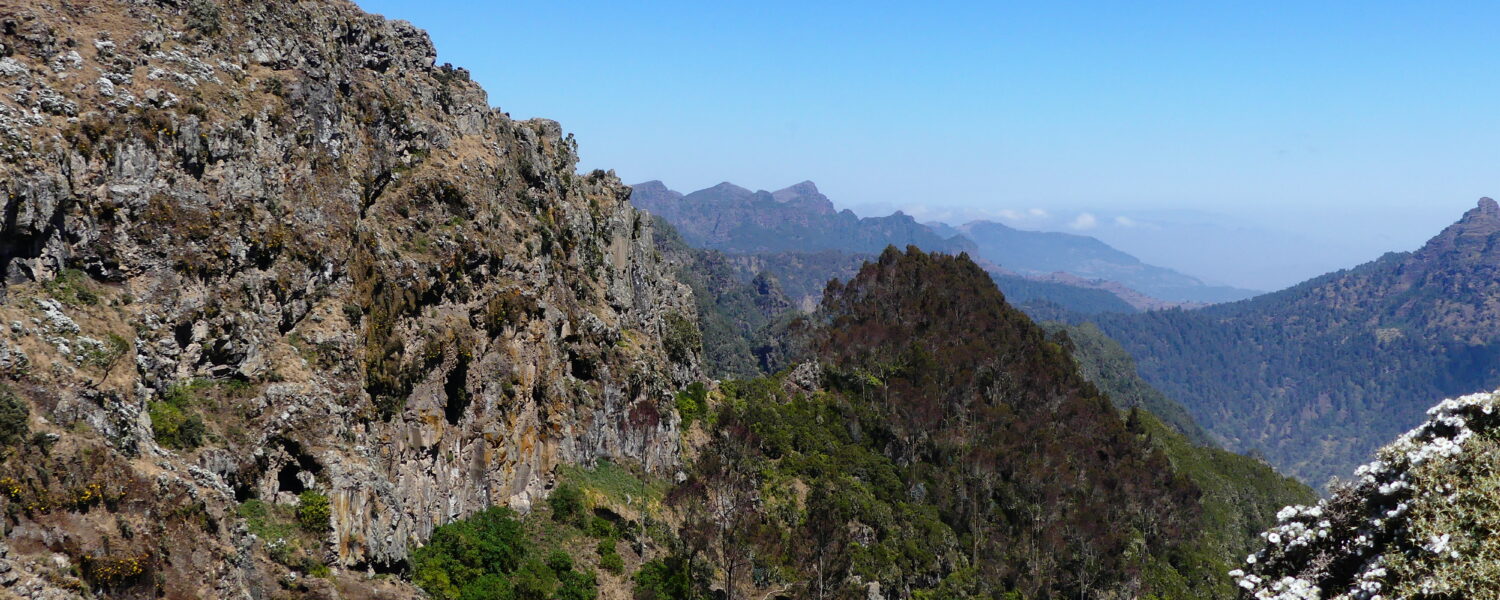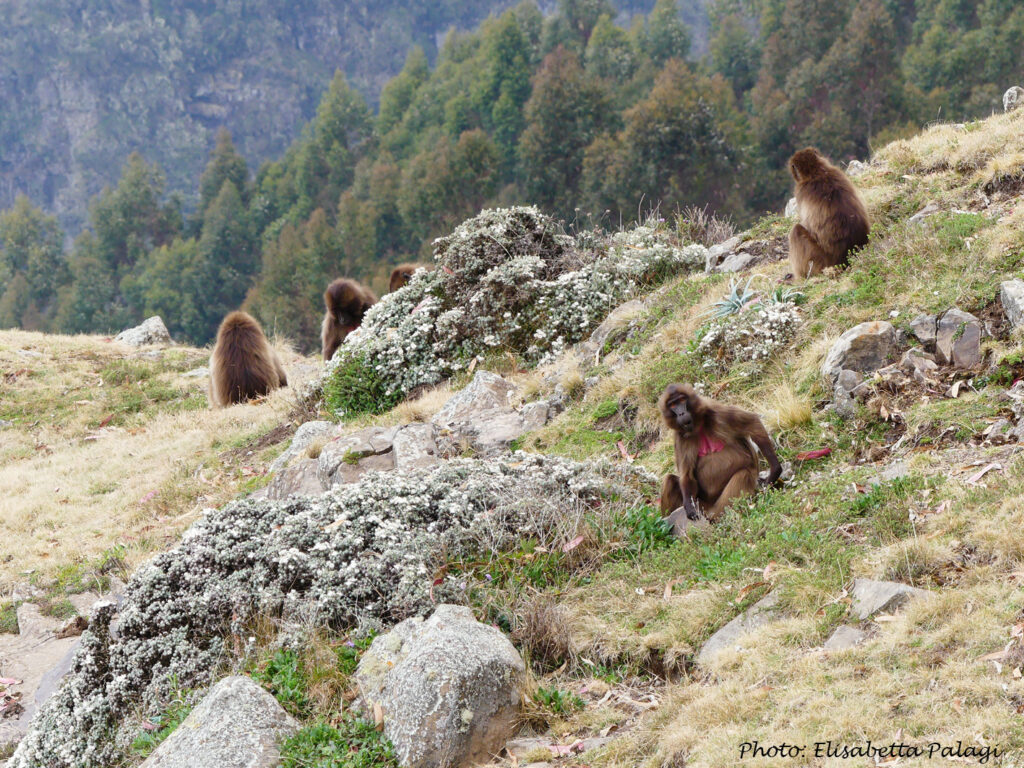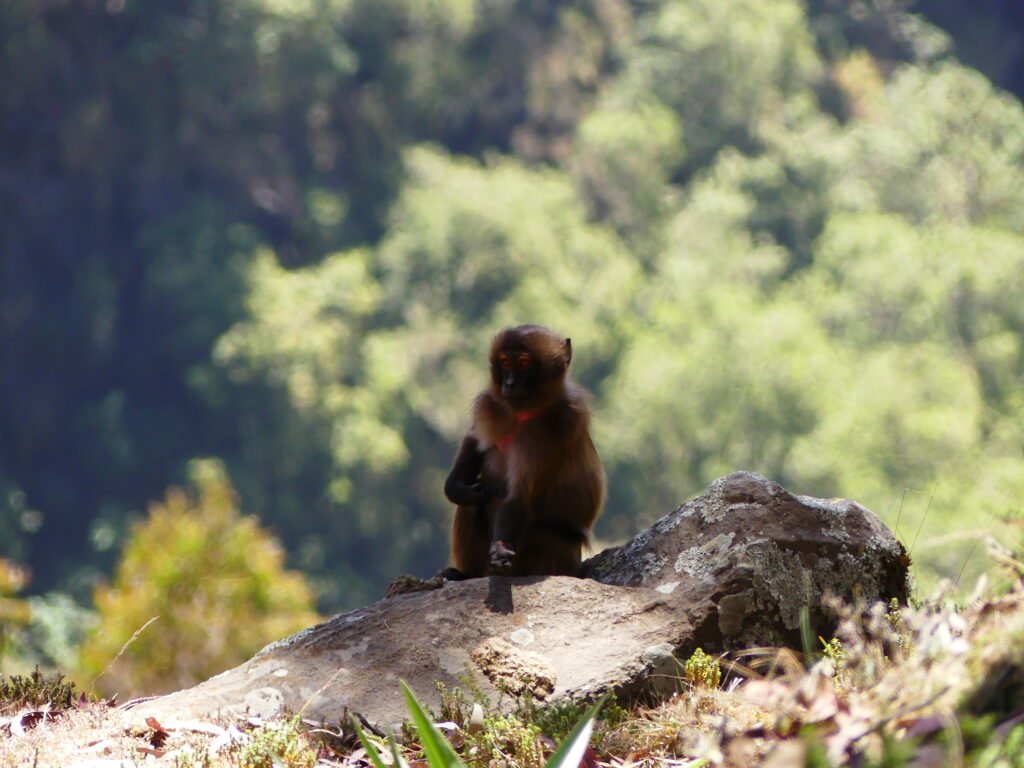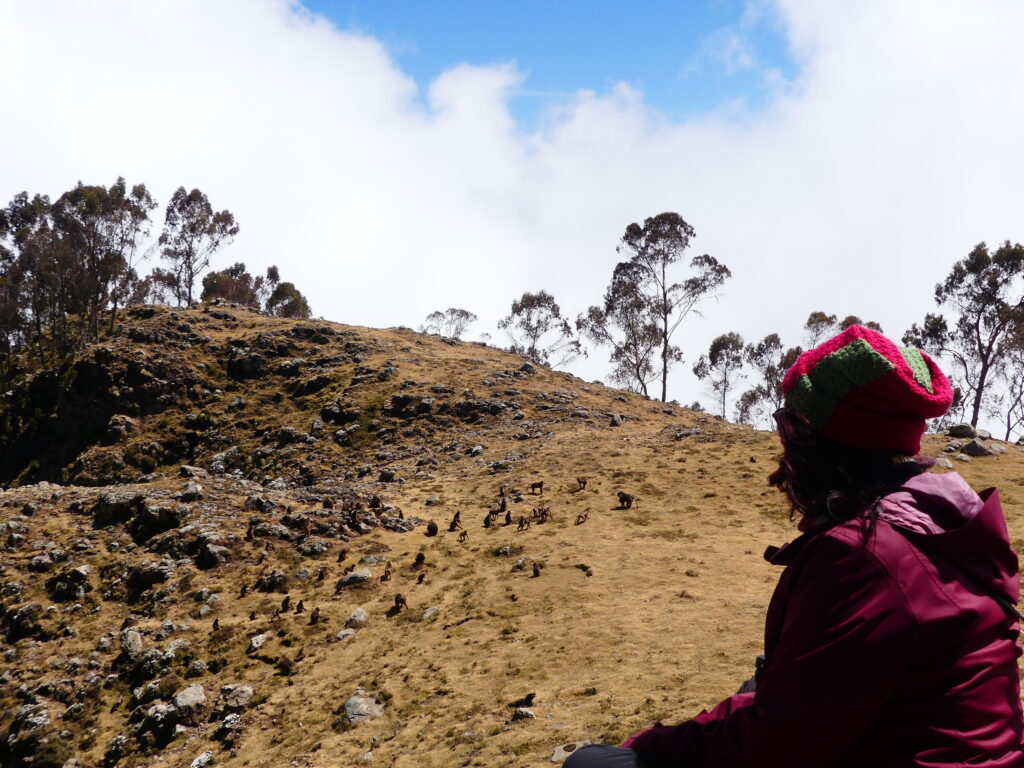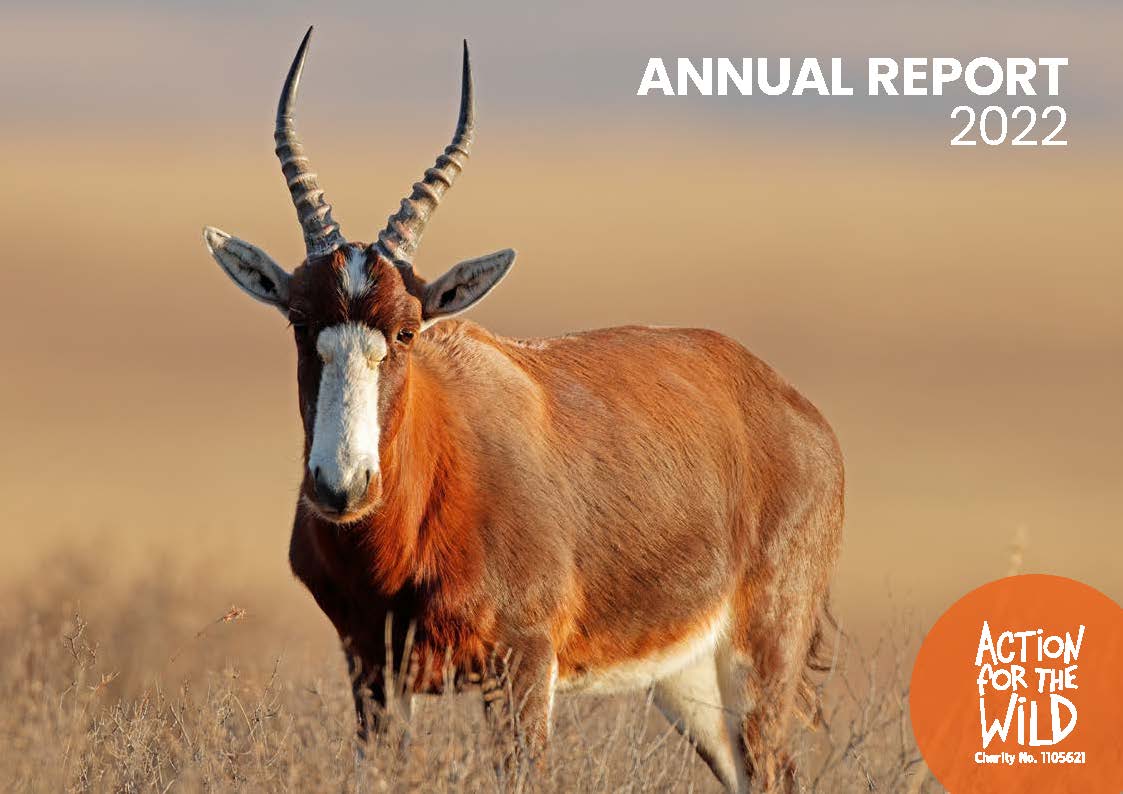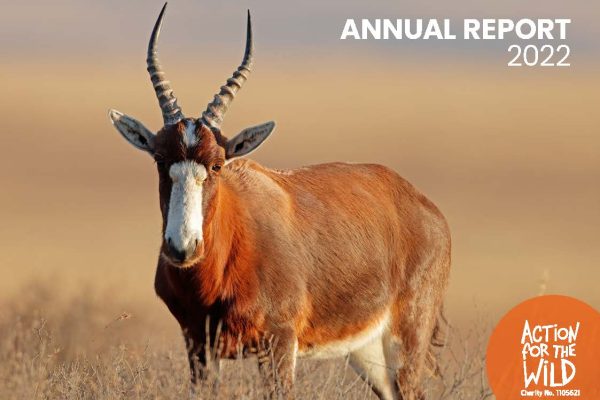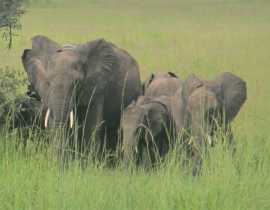Posted June 4, 2021 in Africa
Gelada Baboon Research Study
In 2018, Action for the Wild started supporting a Gelada baboon research project in Ethiopia, and has donated over £2,500 to date. The goal of this project is to improve knowledge and ultimately the conservation of this species in the wild. Very little is known about the population structure, welfare condition and behaviour of gelada baboons that live outside of protected areas and are affected by severe human pressure.
A new study published that Action for the Wild helped fund looks into how different human-primate areas (crop and pasture areas) affect the health and social behaviour of the gelada baboons. 140 gelada baboons were studied between January-May 2019 and December 2019-February 2020. Cultivated plants in crop areas can be highly attractive to geladas, who then approach human settlements to enter the fields in search of food. The crop areas studied consisted of agricultural fields and the zone within 300m of the closest house or cultivated land. In contrast, pasture areas are grasslands without human settlements and cultivated fields, where livestock (horses, goats, sheep, donkeys, and cows) graze during the day, led by shepherds.
Results showed that the geladas frequenting crop areas can be exposed to direct and indirect disturbance. Crop users were exposed to more direct human disturbance, e.g chasing with stones or sticks. Frequent crop users also had significantly greater levels of parasites (Entamoeba histolytica/dispar) compared to infrequent crop users and a higher prevalence of external signs of pathology (alopecia and abnormal swelling). Such pathologies can be caused by iodine deficiency, the use of herbicides on the crops or endoparasites such as tapeworm caught from domestic dogs. In summary, the results suggest that agricultural activities close to human settlements can have a strong impact on wild gelada health.
Geladas foraged significantly less in the crop areas in comparison to pasture, pairs spent significantly more time grooming in the pasture than in the crop areas and engaged in more intense aggressive events when they were in the pasture area than when they were in the crop area. Potentially this reduced social behaviour in the crop areas is to reduce detection probability. Reducing social affiliation and aggression intensity may allow animals to focus on food provisioning, spend less time in the crop area (than in the pasture area), and decrease the probability of being detected.
In conclusion, this work provides a novel assessment of direct and indirect human impact on a wild population of gelada baboons in an unprotected area, in terms of both health status and social behaviour. From a conservation point of view, it is important to assess the impact that human activities can have on health and social interactions of gelada baboons. Further research is needed to clarify the repercussions of human disturbance on the welfare and social dynamics of wild geladas living in unprotected areas in order to contribute to the improvement of the conservation of wild geladas in Ethiopia.

